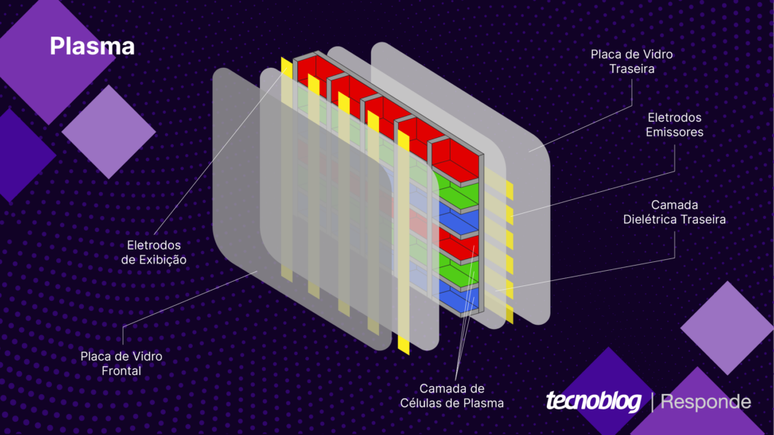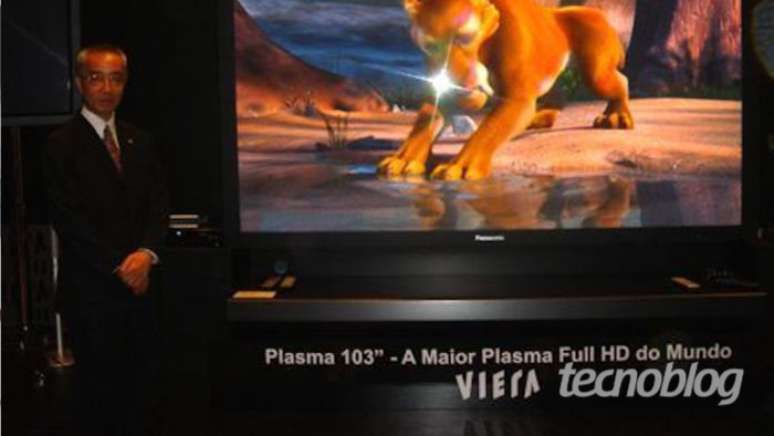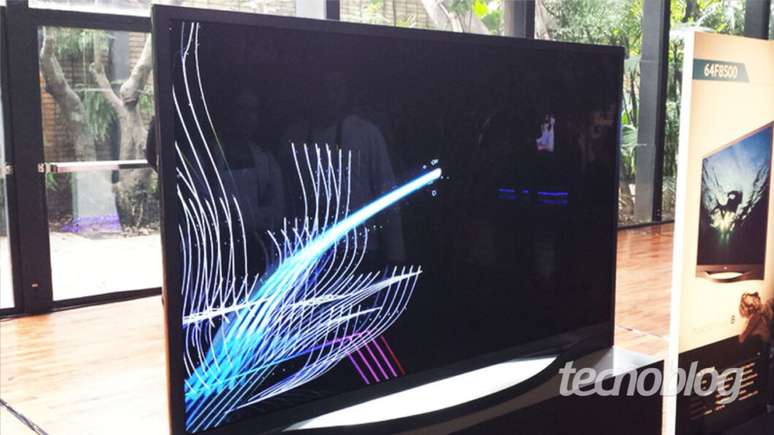Popular in the 2000s, plasma televisions ran on ionized gases and have been criticized for their short lifespan and high energy consumption.
Plasma it was a technology used in flat screen televisions in the 2000s. Its application generated high definition images with deep blacks, thanks to the operation based on ionized gases. It has lost ground to LCD, which dominated the market from the 2010s onwards.
The first plasma television was released in 1997 by Fujitsu and had a resolution of 852×480 pixels on a 42-inch panel. Panasonic and Samsung became the largest plasma manufacturers in the following years, but both gave up on the technology due to problems such as burn-in and high power consumption.
Index
How does a plasma television work?
A plasma television runs on noble gases, such as neon and xenon, which are stored in small cells between two panes of glass. The gases receive an electrical voltage and then release electrons which collide with phosphorus atoms, capable of producing visible light.
The plasma screen is structured in seven main layers:
- Rear glass plate;
- Emitter electrodes;
- Back dielectric layer;
- Plasma cell layer;
- Front dielectric layer;
- display electrodes;
- Glass front plate.

Image formation begins at the electrodes. They supply energy to each plasma cell, which represents a pixel and is coated with different combinations of phosphors. When a voltage is applied, the gases within the cell are ionized and form plasma, the fourth physical state of matter.
Plasma emits only ultraviolet (UV) light, which is invisible to the naked eye. The UV light from the plasma excites the phosphor, which is capable of displaying the colors red, green and blue (standard RGB) at variable intensity. The trio of colored subpixels make up a pixel, and the group of pixels make up an image.
The layers around the plasma cells have only a structural function. The glass plates protect the internal components and support the shield structure, while the dielectric layers act as electrical insulators, separating the electrodes from the noble gases.
Since phosphor-coated plasma cells are capable of emitting their own light, there is no need for a backlight as with LCD screens. Therefore, Plasma works similar to OLED, MicroLED and other self-emitting technologies.
Why did plasma televisions disappear?
Plasma displays were a leap forward from tube TVs and had advantages over LCD such as higher contrast, excellent viewing angle and faster response times, reducing blur. However, these positive points have been overshadowed by problems such as low energy efficiency and burn-in.
Plasma’s weaknesses have caused the technology to lose ground to LCD and OLED TVs. Below, we detail the main problems of plasma televisions:
Lifespan shortened by burn-in
Burn-in limited the lifespan of the plasma. The problem occurred when a static image, such as a TV station logo, was displayed on the screen for a long time, causing image retention and pixel burn-in.
In plasma televisions, phosphors are responsible for generating light. When a static image is held on the screen, the phosphors of the corresponding areas are constantly activated, which leads to wear of those specific areas. Over time, this results in permanent marks on the display.

Increased energy and heating consumption
Plasma televisions required the ionization of noble gases and the activation of phosphors to emit light and form images, which resulted in higher energy consumption. The process was less efficient than the LED-backlit LCD screens that became popular in the early 2010s.
Also, plasma televisions tended to get hotter because the phosphor gave off heat when activated, and it took a significant amount of energy to keep the gases in a plasma state, some of which energy was dissipated as heat.
Too many reflections in the image
The front glass layer of plasma televisions had a glossy finish, which increased the reflection of ambient light and made it difficult to see images in brightly lit places. Even with the use of plasma glare filters, LCD TVs with matte finishes suffered less from the problem.
dimmer brightness
The brightness of plasma televisions was lower due to the generation of images by activating the phosphors in the plasma cells, which emitted light in a diffuse and less intense way than the backlight of an LCD screen.
Increasing the brightness on Plasma could also accelerate the wear of matches and reduce their life, causing manufacturers to choose to keep the brightness at more moderate levels.

Other disadvantages of plasma TVs
Plasma had other minor disadvantages due to its composition:
- Weight and thickness: the panels were heavy and thick to accommodate the plasma cells and phosphors, and were lined with thick glass;
- To measure: limitations in the manufacturing process also limited the resolution and range of screen sizes. The most popular plasma televisions were 42 inches or larger. There were no models smaller than 32 inches for sale.
- Environmentally Sensitive: Plasma televisions were more sensitive to weather conditions, especially altitude. At higher altitudes, lower atmospheric pressure affected the behavior of gases within the plasma cells, which could reduce image quality.
These disadvantages have made plasma televisions less competitive in the market, gradually being replaced by more advanced and versatile technologies such as LCD and OLED.
At the end of 2013, Panasonic and Samsung announced the end of the production of plasma TVs. At the time, the technology accounted for just 5% of TV sales in Brazil, compared to 83.1% for LCDs, according to data from consulting firm GfK.
What are Plasma TVs and why did they go out of business?
Source: Terra
Rose James is a Gossipify movie and series reviewer known for her in-depth analysis and unique perspective on the latest releases. With a background in film studies, she provides engaging and informative reviews, and keeps readers up to date with industry trends and emerging talents.








